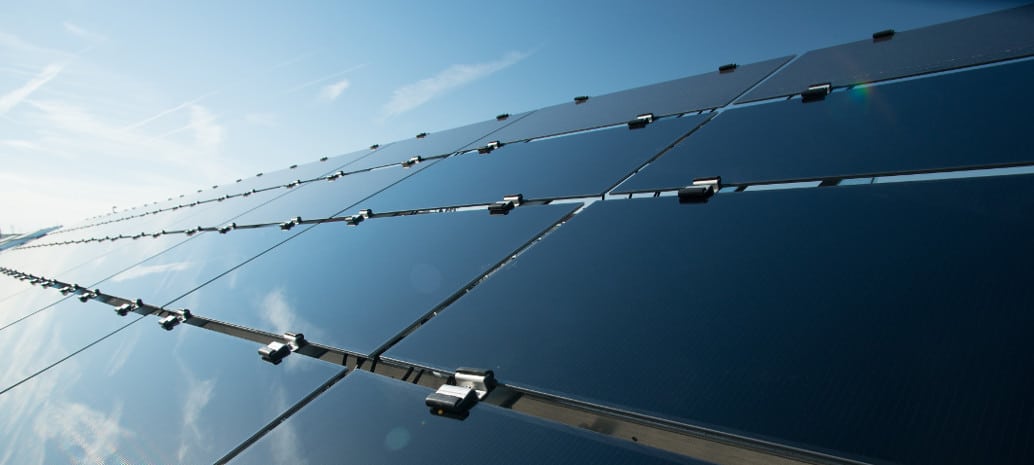First Solar has undergone a number of changes this year. The company has announced big changes in its module format, with plans to launch two new module designs on the back of impressive technology progress, and more recently has announced that it will reduce its presence as a developer and construction contractor and focus more on module-only sales.
The company’s Q3 results are a study in contradictions. On one hand, revenues fell 43% year-over-year to $688 million, the lowest level in at least a year. This appears to be largely driven by a lower level of project sales, which is not unusual in the chaotic world of solar project development.
On the other hand, the company’s manufacturing remains strong. First Solar shipped 779 MW of PV modules during the quarter, with factories running at a 97% utilization rate. Additionally the company continued to make progress on its technology, bringing its fleet average conversion efficiency from 16.2% to 16.5% during the quarter.
The company’s best lines produced an impressive 16.9% efficiency at the end of the quarter, suggesting that the best is yet to come and that the days were the company’s cadmium telluride thin film lagged behind multicrystalline silicon solar in efficiency are over.
And even in an environment where prices have collapsed – with First Solar estimating that crystalline silicon PV modules are currently running at around $0.40 per watt – the company remains highly profitable. First Solar reported an enviable 13% operating margin in Q3, and $154 million in profit, which will likely be the best numbers that any major module maker reports this quarter.
First Solar is moving to a higher portion of module-only sales, and notes that its systems business fell from 86% to 69% of sales during the quarter. As it does so, is emphasizing international markets. First Solar has long had a very strong presence in the United States and India, but CEO Mark Widmar says that the company is also seeing an increase in module-only sales in Thailand, various countries across Asia, and Latin America.
First Solar also expressed confidence about the prospects for the community solar market in the United States. The company further notes that its operations and maintenance (O&M) business continues to grow, with 1.5 GW of O&M contracts booked in the year to date, including a high portion of third-party projects.
Series 5 and 6
Earlier this year First Solar made big waves with announcements that it would move to two new module formats, the Series 5, which involves three Series 4 modules mounted on a joint rail with one electrical interconnection, and the large-format Series 6 module.
Series 5 can be accomplished using manufacturing additions to existing tools, but Series 6 will require new tools for the larger glass substrate format. As such, First Solar planned to bring out its Series 5 modules first, with production scheduled for the beginning of 2017. However, on the call First Solar suggested that it may accelerate the timeline for Series 6 roll-out, due to the new competitive landscape and the development of the technology.
“If we had known everything we know now about Series 6, we might have gone straight to Series 6,” explained CEO Widmar during the call. “At any price point, Series 6 will exceed any expectations around margins that we have now.”
First Solar says that it will provide further details during an event on November 19.
2016 outlook
The contradictions in First Solar’s Q3 results extend to its guidance. First Solar slashed its 2016 revenue forecast by over 25% to $2.8-2.9 billion, which it blames on the sale of the Moapa and California Flats projects being pushed back to 2017.
However, the company is simultaneously predicting an increase in its profitability, with the mid-point of its operating income guidance rising by more than $10 million. First Solar notes the low margins on the two projects, with Chief Financial Officer Alex Bradley describing Moapa and California Flats as having “unique differences” to other projects that First Solar developed, alluding to their lower profitability.
Looking in to 2017, First Solar still has a strong pipeline of contracted projects, and notes that it has 550 MW of module shipments already booked to its systems business.
And while the company noted the positive trend of more corporations directly procuring renewable energy, it also notes the slump in contract signing reported by other market participants and observers, with CEO Widmar expressing that it will be difficult to get to a 1:1 book to bill ratio for the full year 2016.
This content is protected by copyright and may not be reused. If you want to cooperate with us and would like to reuse some of our content, please contact: editors@pv-magazine.com.









By submitting this form you agree to pv magazine using your data for the purposes of publishing your comment.
Your personal data will only be disclosed or otherwise transmitted to third parties for the purposes of spam filtering or if this is necessary for technical maintenance of the website. Any other transfer to third parties will not take place unless this is justified on the basis of applicable data protection regulations or if pv magazine is legally obliged to do so.
You may revoke this consent at any time with effect for the future, in which case your personal data will be deleted immediately. Otherwise, your data will be deleted if pv magazine has processed your request or the purpose of data storage is fulfilled.
Further information on data privacy can be found in our Data Protection Policy.